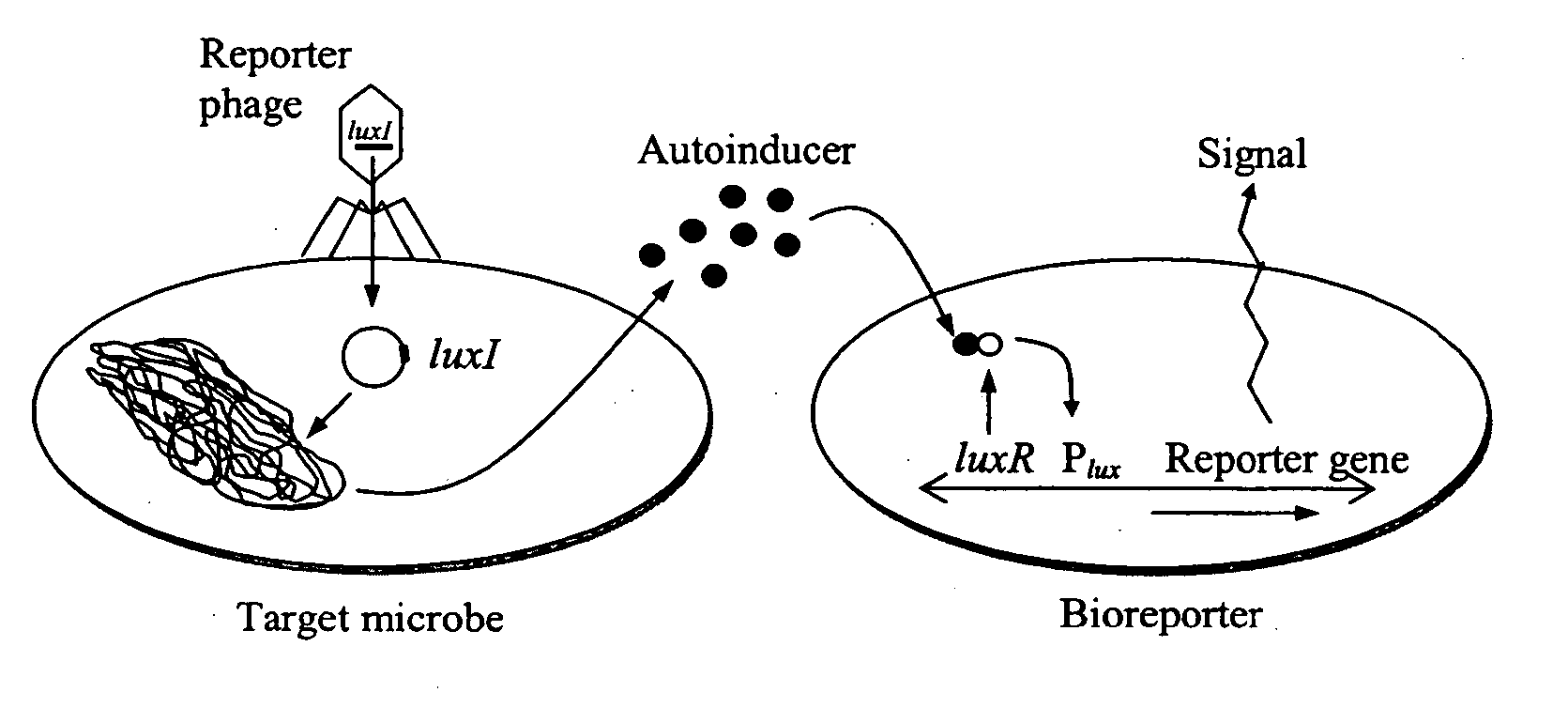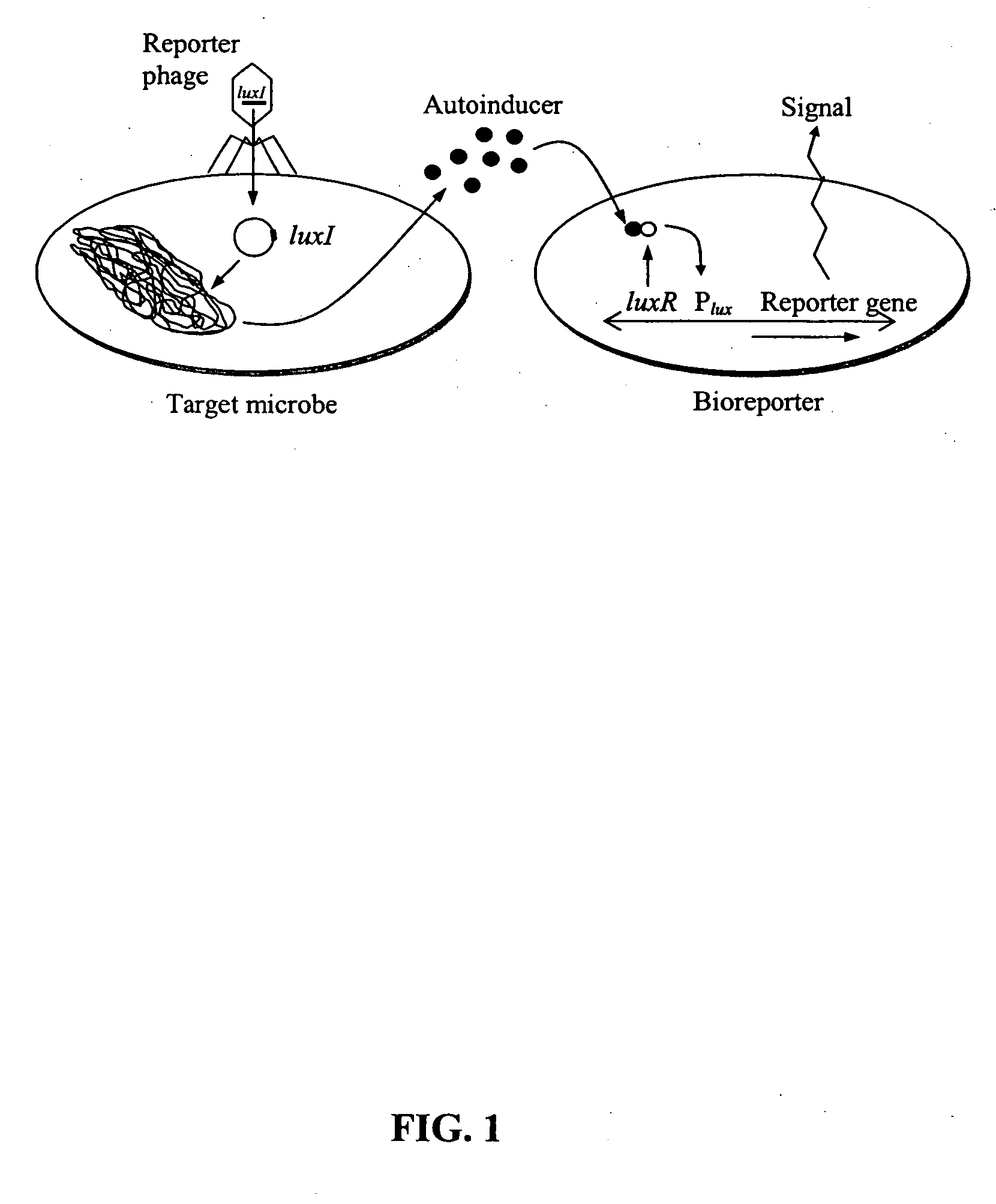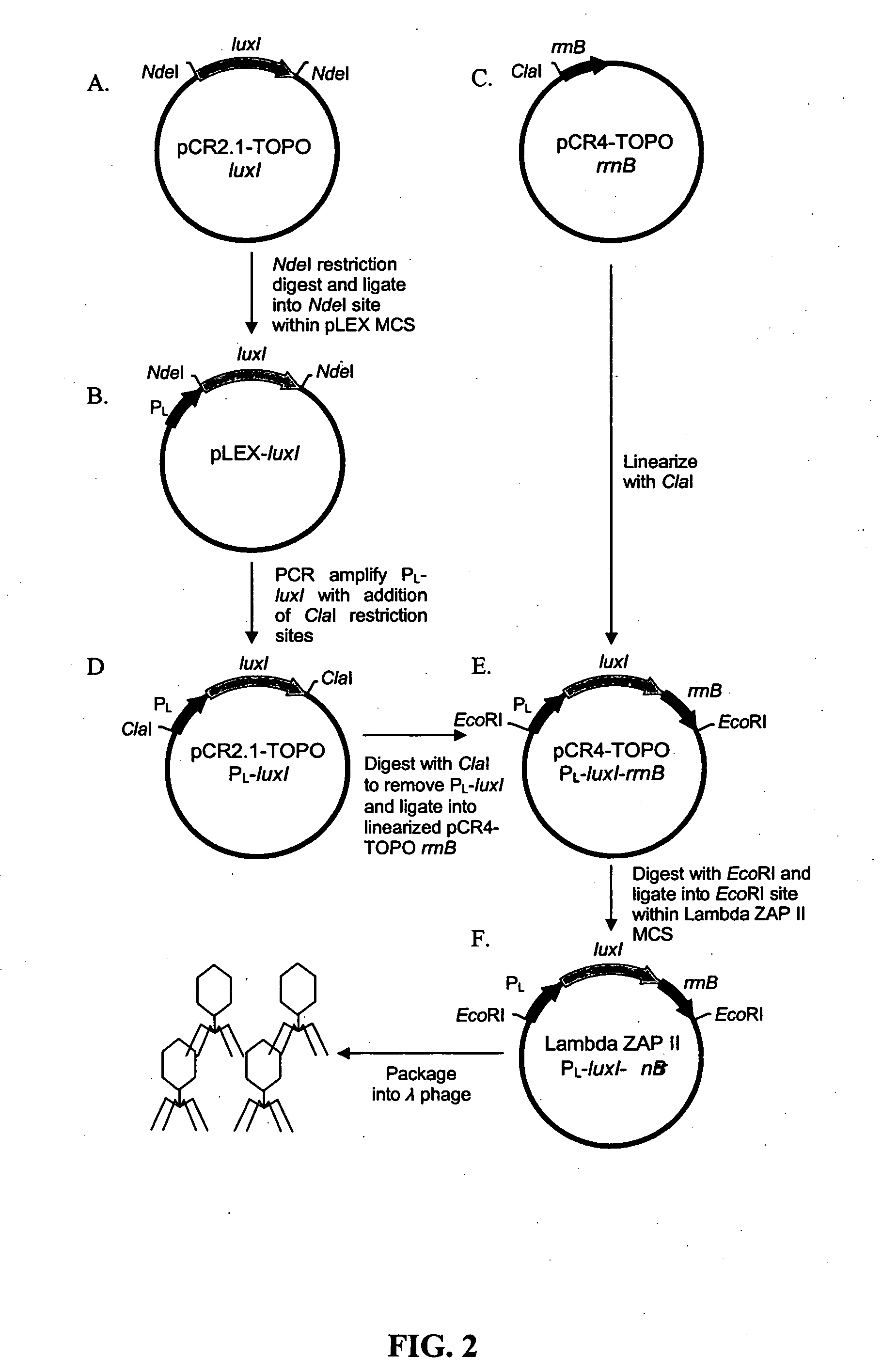Bioreporter for detection of microbes
- Summary
- Abstract
- Description
- Claims
- Application Information
AI Technical Summary
Benefits of technology
Problems solved by technology
Method used
Image
Examples
example 1
Bioreporter system for E. coli using Phage Lambda
[0049] The feasibility of luxI-incorporated phage reporters was shown by constructing and testing a biodiagnostic system for E. coli using temperate phage lambda. The PL promoter from phage lambda (GenBank accession no. J02459) was fused in-frame to a single V. fischeri luxI gene (accession no. M19039) followed by a T1T2 transcriptional terminator (accession no. X81837). The PL-luxI-T1T2 construct was then inserted into the lambda genome, packaged into phage heads (Stratagene LambdaZAP and Gigapack kits), and propagated as luxI-bearing lambda phage (λluxI).
[0050] A bioluminescent bioreporter specific for OHHL was also constructed. This bioreporter, designated E. coli OHHLux, contains a chromosomal insert of the luxR regulatory gene and the complete luxCDABE gene cassette. It is capable of sensing OHHL down to 10 nM, and was used in the following experiment. λluxI reporter phage were combined at a multiplicity of infection (MOI) of 1...
example 2
[0052] Linking Bacteriphage infection to quorum sensing signaling and bioluminescent bioreporter monitoring for direct detection of bacterial agents.
Materials and Methods
[0053] Bacterial strains and bacteriophages. The phage bioluminescent system includes three components; the luxI-incorporated reporter phage (λluxI), the AHL-specific bioluminescent bioreporter (E. coli OHHLux), and the target bacterium. The λluxI reporter phage was constructed within temperate phage lambda, lambda-resistant E. coli XLOLR (Stratagene, La Jolla, Calif.) was used for construction of the OHHL-specific bioluminescent bioreporter E. coli OHHLux, and the E. coli K12 variant XL1-Blue (Stratagene) was used as the model host strain for phage infection. lux genes were derived from V fischeri or Photorhabdus luminescens (Gupta et al., FEMS Yeast Res 4, 305-313, 2003). E. coli strains were typically grown in Luria-Bertani media (LB; 10 g tryptone, 5 g yeast extract, 10 g NaCL per 1 H2O, pH 7.0). NZY top agar ...
example 3
Increasing sensitivity to bacterial pathogens
[0068] To increase sensitivity, autoinducer synthesis can be increased, and this can be done by integrating multiple luxI genes within the phage. High-level expression of luxI and corresponding high-level synthesis of OHHL autoinducer instigates a faster response from the E. coli OHHLux bioreporters during low-level target exposure. The same system as described in FIG. 2 is used. The luxI gene is PCR-amplified from V. fischeri (GenBank accession no. AF074719) using the primer pair 5′-CATATGACCGGTACTATAATGATAAAAAAATCGG (SEQ ID NO:15)-3′ and 5′-ACGCGTTCCGGATTAATTTAAGACTGC (SEQ ID NO:16)-3′ containing unique tandem restriction sites at each end (underlined) and cloned into a pCR2.1 TOPO vector. The terminal tandem restriction sites allow for directional insertion of additional luxI genes. For example, the PCR products above generate the sequence NdeI-AgeI-luxI-MluI-BspEI. A second luxI gene can be PCR-amplified with the sequence NdeI-luxI-A...
PUM
| Property | Measurement | Unit |
|---|---|---|
| Volume | aaaaa | aaaaa |
| Fraction | aaaaa | aaaaa |
| Time | aaaaa | aaaaa |
Abstract
Description
Claims
Application Information
 Login to View More
Login to View More - R&D
- Intellectual Property
- Life Sciences
- Materials
- Tech Scout
- Unparalleled Data Quality
- Higher Quality Content
- 60% Fewer Hallucinations
Browse by: Latest US Patents, China's latest patents, Technical Efficacy Thesaurus, Application Domain, Technology Topic, Popular Technical Reports.
© 2025 PatSnap. All rights reserved.Legal|Privacy policy|Modern Slavery Act Transparency Statement|Sitemap|About US| Contact US: help@patsnap.com



